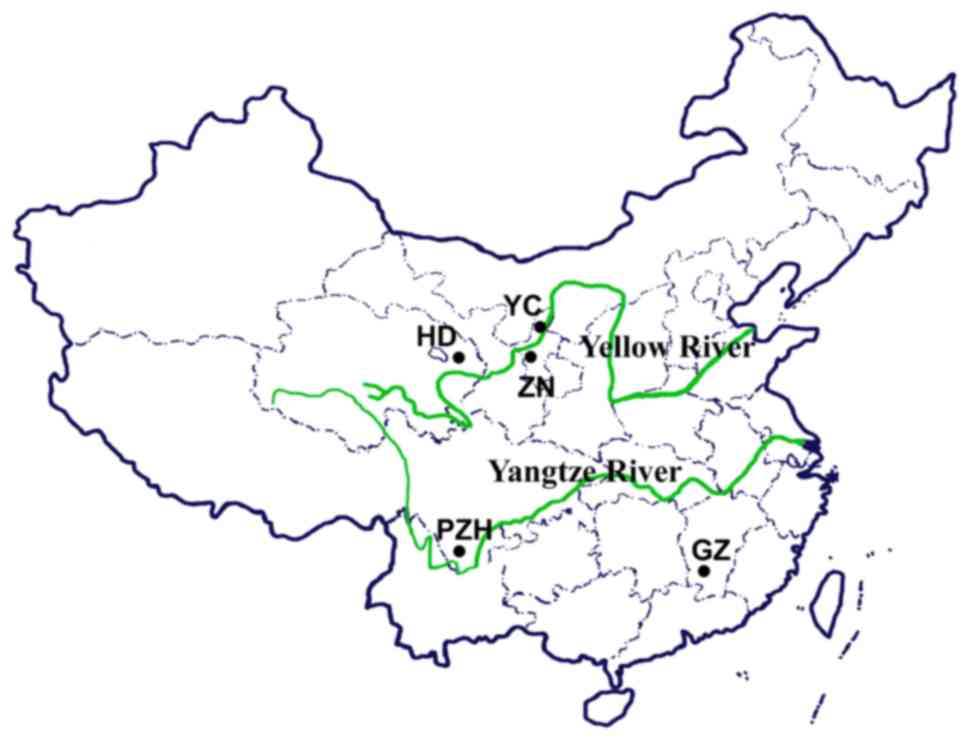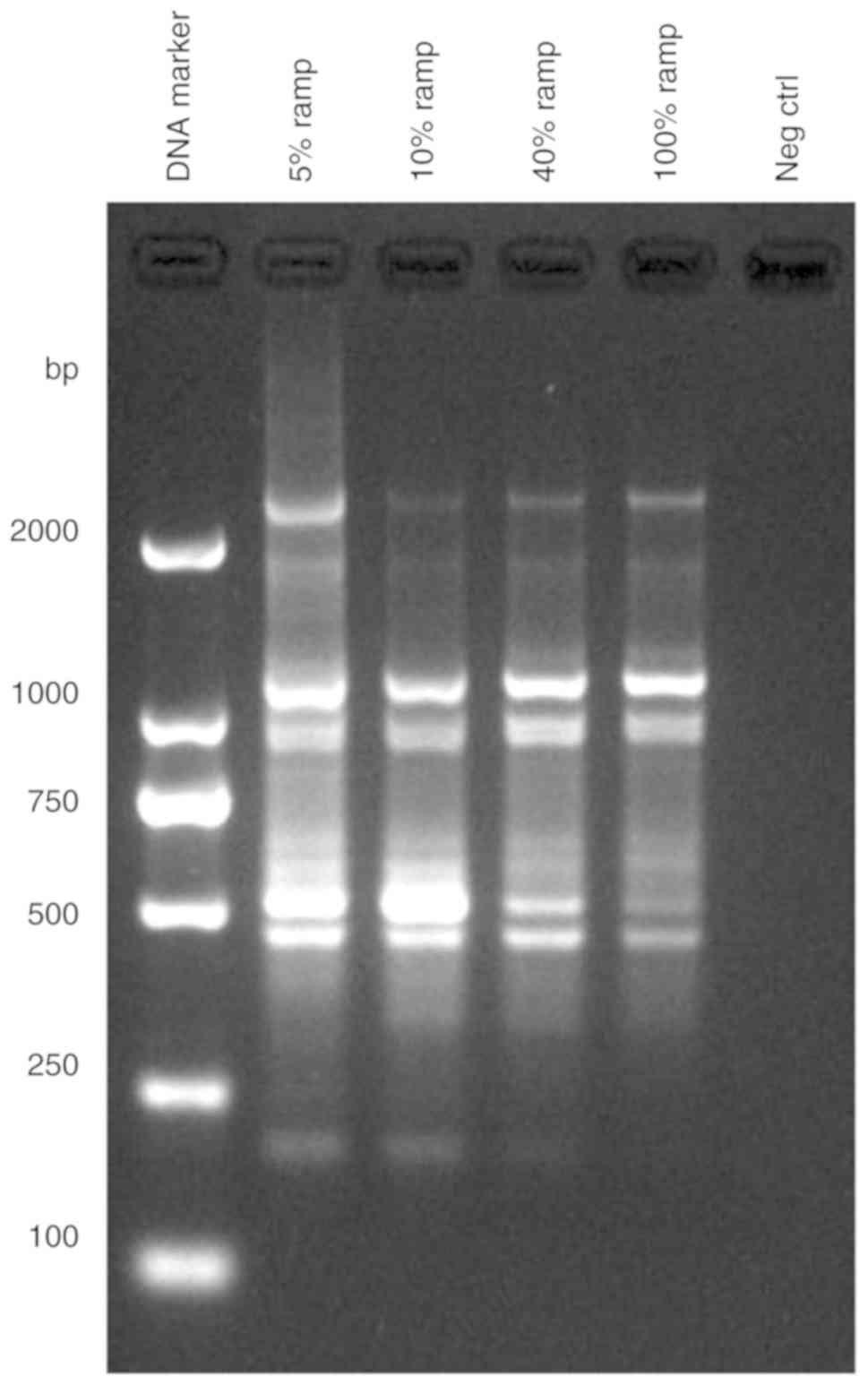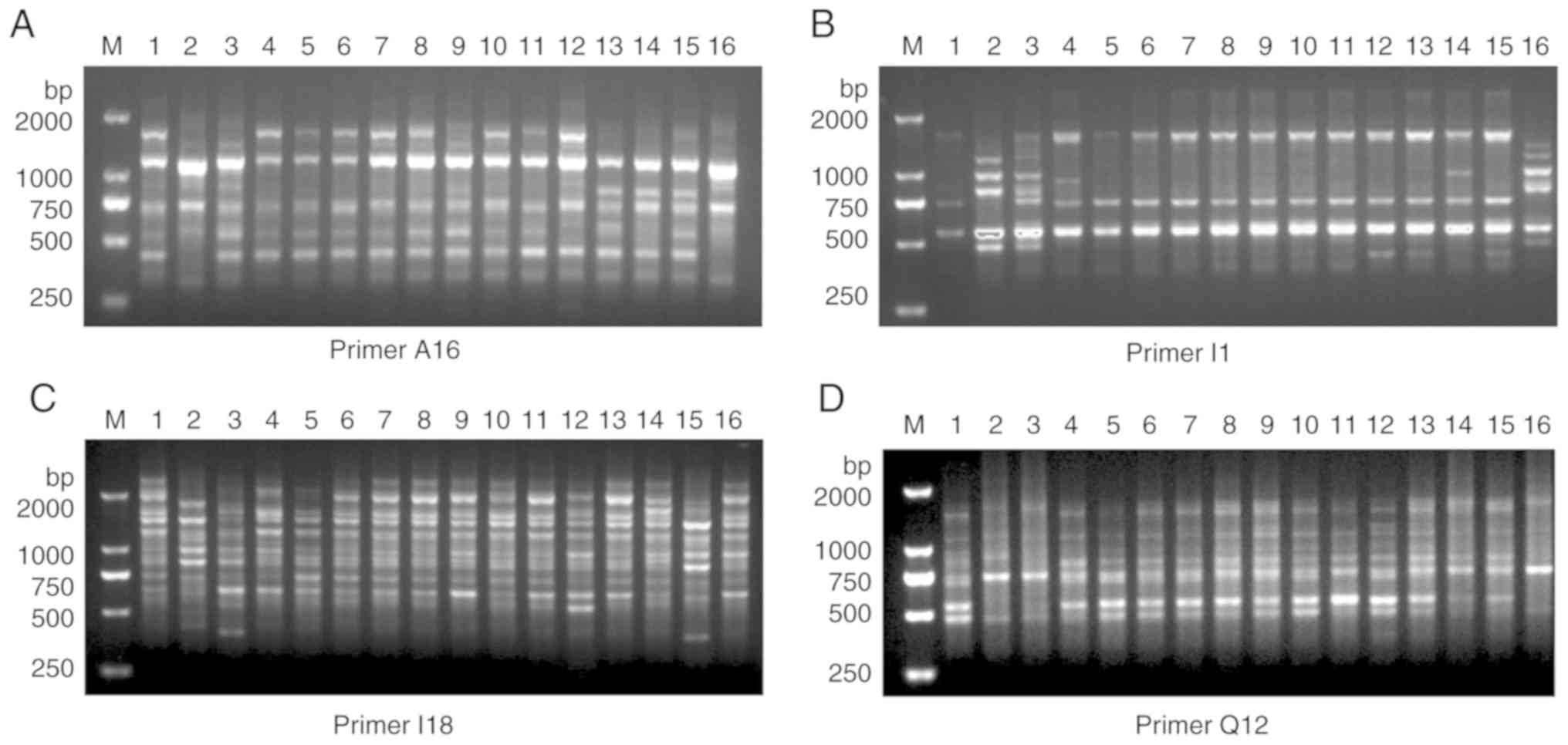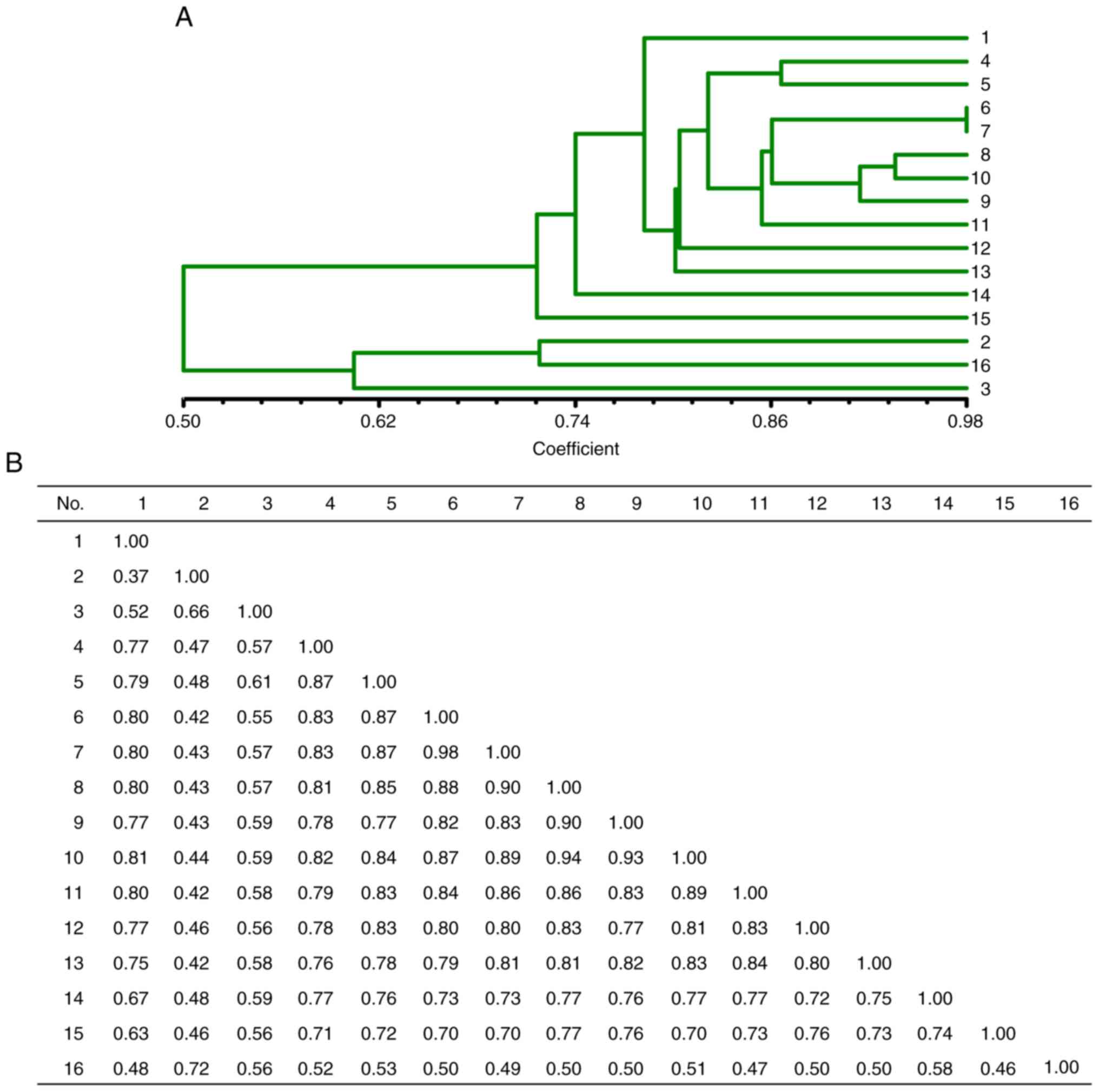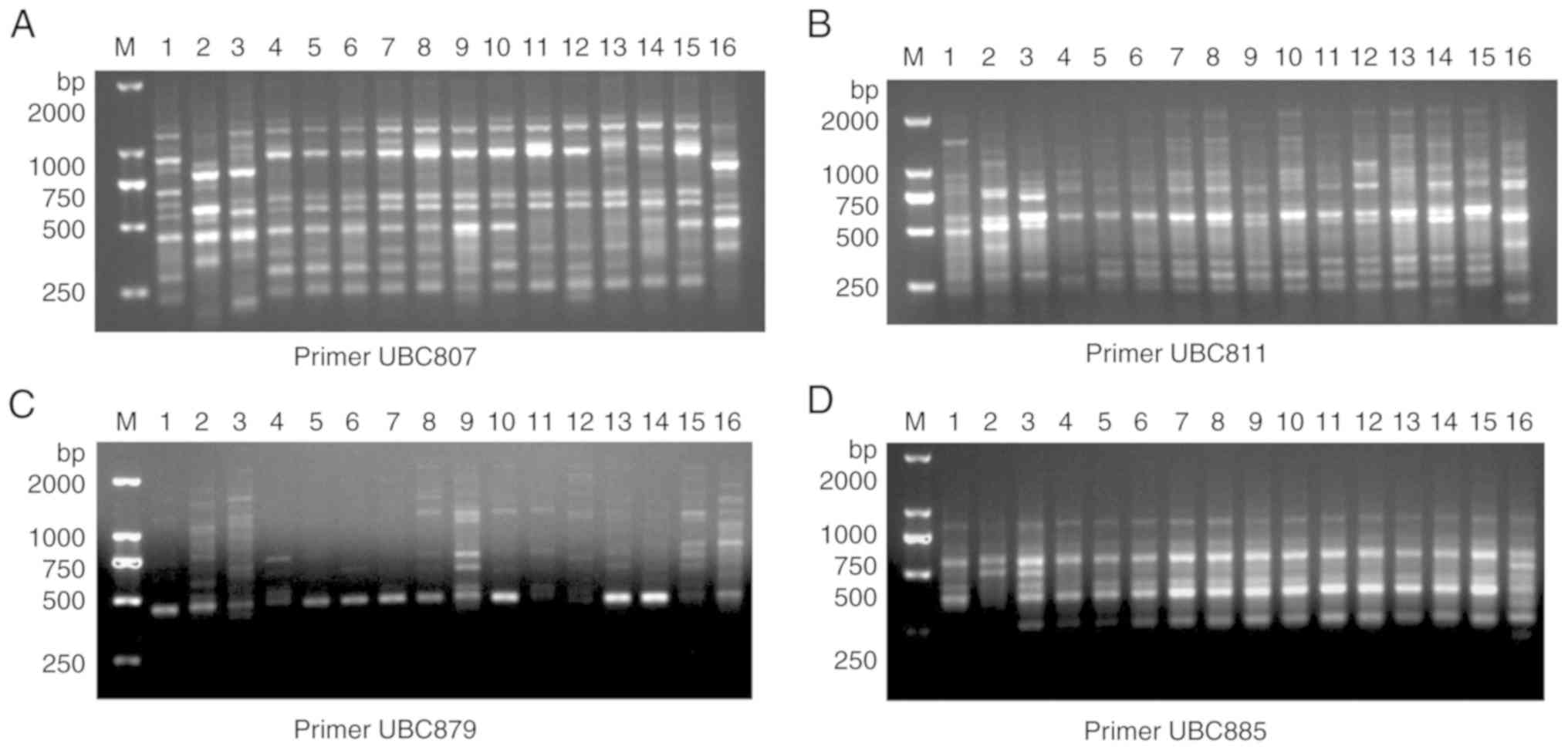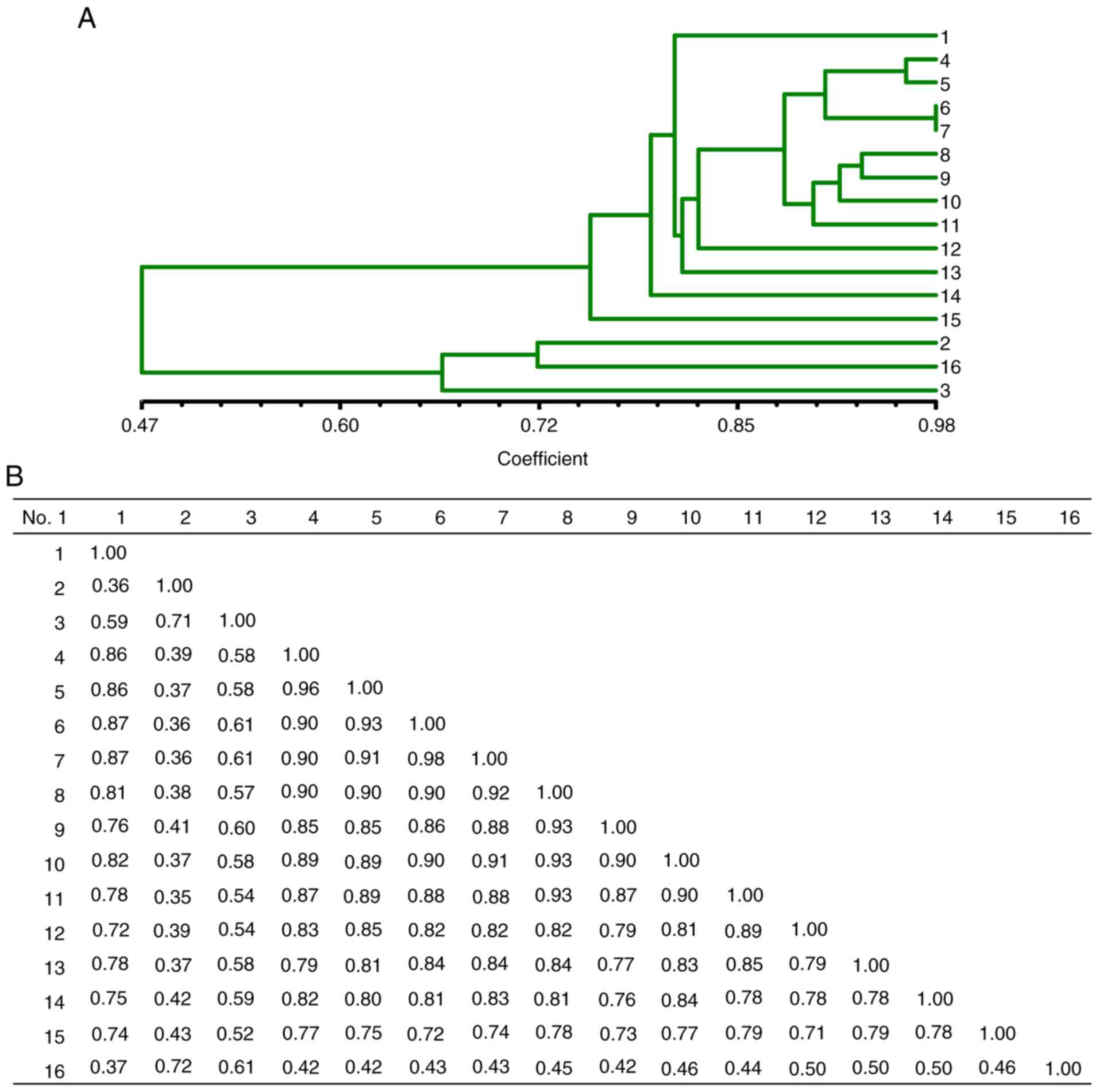|
1
|
Dong JZ, Yang JJ and Wang Y: Resources of
Lycium species and related research progress. Zhongguo Zhong Yao Za
Zhi. 33:2020–2027. 2008.PubMed/NCBI(In Chinese).
|
|
2
|
Ram VJ: Herbal preparations as a source of
hepatoprotective agents. Drug News Perspect. 14:353–363.
2001.PubMed/NCBI
|
|
3
|
Potterat O: Goji (Lycium barbarum
and L. chinense): Phytochemistry, pharmacology and safety in
the perspective of traditional uses and recent popularity. Planta
Med. 76:7–19. 2010.PubMed/NCBI View Article : Google Scholar
|
|
4
|
Ulbricht C, Bryan JK, Costa D, Culwell S,
Giese N, Isaac R, Nummy K, Pham T, Rapp C, Rusie E, et al: An
evidence-based systematic review of Goji (Lycium spp.) by
the natural standard research collaboration. J Diet Suppl.
12:184–240. 2015.PubMed/NCBI View Article : Google Scholar
|
|
5
|
Jin M, Huang Q, Zhao K and Shang P:
Biological activities and potential health benefit effects of
polysaccharides isolated from Lycium barbarum L. Int J Biol
Macromol. 54:16–23. 2013.PubMed/NCBI View Article : Google Scholar
|
|
6
|
Chang RC and So KF: Use of anti-aging
herbal medicine, Lycium barbarum, against aging-associated
diseases. What do we know so far? Cell Mol Neurobiol. 28:643–652.
2008.PubMed/NCBI View Article : Google Scholar
|
|
7
|
Ma ZF, Zhang H, The SS, Wang CW, Zhang Y,
Hayford F, Wang L, Ma T, Dong Z, Zhang Y and Zhu Y: Goji berries as
a potential natural antioxidant medicine: An insight into their
molecular mechanisms of action. Oxid Med Cell Longev.
2019(2437397)2019.PubMed/NCBI View Article : Google Scholar
|
|
8
|
Liu L, Lao W, Ji QS, Yang ZH, Yu GC and
Zhong JX: Lycium barbarum polysaccharides protected human
retinal pigment epithelial cells against oxidative stress-induced
apoptosis. Int J Ophthalmol. 8:11–16. 2015.PubMed/NCBI View Article : Google Scholar
|
|
9
|
Lam CS, Tipoe GL, So KF and Fung ML:
Neuroprotective mechanism of Lycium barbarum polysaccharides
against hippocampal-dependent spatial memory deficits in a rat
model of obstructive sleep apnea. PLoS One.
10(e0117990)2015.PubMed/NCBI View Article : Google Scholar
|
|
10
|
Yu H, Wark L, Ji H, Willard L, Jaing Y,
Han J, He H, Ortiz E and Zhang Y: Medeiros DM and Lin D: Dietary
wolfberry upregulates carotenoid metabolic genes and enhances
mitochondrial biogenesis in the retina of db/db diabetic mice. Mol
Nutr Food Res. 57:1158–1169. 2013.PubMed/NCBI View Article : Google Scholar
|
|
11
|
Lin J, Zhang Y, Wang X and Wang W:
Lycium ruthenicum extract alleviates high-fat diet-induced
nonalcoholic fatty liver disease via enhancing the AMPK signaling
pathway. Mol Med Rep. 12:3835–3840. 2015.PubMed/NCBI View Article : Google Scholar
|
|
12
|
Ye M, Moon J, Yang J, Hwa Lim H, Bin Hong
S, Shim I and Bae H: The standardized Lycium chinense fruit
extract protects against Alzheimer's disease in 3xTg-AD mice. J
Ethnopharmacol. 172:85–90. 2015.PubMed/NCBI View Article : Google Scholar
|
|
13
|
Lin L, Li J, Lv H, Ma Y and Qian Y: Effect
of Lycium ruthenicum anthocyanins on atherosclerosis in
mice. Zhongguo Zhong Yao Za Zhi. 37:1460–1466. 2012.PubMed/NCBI(In Chinese).
|
|
14
|
Zhao R, Cai Y, Shao X and Ma B: Improving
the activity of Lycium barbarum polysaccharide on sub-health
mice. Food Funct. 6:2033–2040. 2015.
|
|
15
|
Dursun R, Zengin Y, Gündüz E, İçer M,
Durgun HM, Dağgulli M, Kaplan İ, Alabalık U and Güloğlu C: The
protective effect of goji berry extract in ischemic reperfusion in
testis torsion. Int J Clin Exp Med. 8:2727–2733. 2015.PubMed/NCBI
|
|
16
|
Telang N, Li G, Sepkovic D, Bradlow HL and
Wong GY: Comparative efficacy of extracts from Lycium
barbarum bark and fruit on estrogen receptor positive human
mammary carcinoma MCF-7 cells. Nutr Cancer. 66:278–284.
2014.PubMed/NCBI View Article : Google Scholar
|
|
17
|
Chao JC, Chiang SW, Wang CC, Tsai YH and
Wu MS: Hot water-extracted Lycium barbarum and Rehmannia
glutinosa inhibit proliferation and induce apoptosis of
hepatocellular carcinoma cells. World J Gastroenterol.
12:4478–4484. 2006.PubMed/NCBI View Article : Google Scholar
|
|
18
|
Williams JG, Kubelik AR, Livak KJ,
Rafalski JA and Tingey SV: DNA polymorphisms amplified by arbitrary
primers are useful as genetic markers. Nucleic Acids Res.
18:6531–6535. 1990.PubMed/NCBI View Article : Google Scholar
|
|
19
|
Hess J, Kadereit JW and Vargas P: The
colonization history of Olea europaea L. In Macaronesia based on
internal transcribed spacer 1 (ITS-1) sequences, randomly amplified
polymorphic DNAs (RAPD), and inter simple sequence repeats (ISSR).
Mol Ecol. 9:857–868. 2000.
|
|
20
|
Agarwal M, Shrivastava N and Padh H:
Advances in molecular marker techniques and their applications in
plant sciences. Plant Cell Rep. 27:617–631. 2008.PubMed/NCBI View Article : Google Scholar
|
|
21
|
Varela ES, Lima JP, Galdino AS, Pinto Lda
S, Bezerra WM, Nunes EP, Alves MA and Grangeiro TB: Relationships
in subtribe Diocleinae (Leguminosae; Papilionoideae) inferred from
internal transcribed spacer sequences from nuclear ribosomal DNA.
Phytochemistry. 65:59–69. 2004.PubMed/NCBI View Article : Google Scholar
|
|
22
|
Taški-Ajduković K, Nagl N, Ćurčić Z and
Zorić M: Estimation of genetic diversity and relationship in sugar
beet pollinators based on SSR markers. Electronic J Biotechnol.
27:1–7. 2017.
|
|
23
|
Pachuau L, Atom AD and Thangjam R: Genome
classification of musa cultivars from northeast india as revealed
by ITS and IRAP markers. Appl Biochem Biotechnol. 172:3939–3948.
2014.PubMed/NCBI View Article : Google Scholar
|
|
24
|
Mei Z, Zhang X, Khan MA, Imani S, Liu X,
Zou H, Wei C and Fu J: Genetic analysis of Penthorum
chinense Pursh. By improved-RAPD and ISSR in China. Electron J
Biotechnol. 30:6–11. 2017.PubMed/NCBI View Article : Google Scholar
|
|
25
|
Fu S, Cheng J, Wei C, Yang L, Xiao X,
Zhang D, Stewart MD and Fu J: Development of diagnostic SCAR
markers for genomic DNA amplifications in breast carcinoma by DNA
cloning of high-GC RAMP-PCR fragments. Oncotarget. 8:43866–43877.
2017.PubMed/NCBI View Article : Google Scholar
|
|
26
|
Fu JJ, Li LY, Xu X, Wang Z, Tang G, Yin C
and Lu G: An improved method for increasing the efficiency of the
technique of random amplified polymorphic DNA (RAPD). Hereditas.
22:251–252. 1999.
|
|
27
|
Fu J, Yang L, Khan MA and Mei Z: Genetic
characterization and authentication of Lonicera japonica Thunb. By
using improved RAPD analysis. Mol Biol Rep. 40:5993–5999.
2013.PubMed/NCBI View Article : Google Scholar
|
|
28
|
Fu J: Short protocols in medical molecular
biology. China Medical Science Press, 2012.
|
|
29
|
Mei Z, Khan MA, Zhang X and Fu J: Rapid
and accurate genetic authentication of Penthorum chinense by
improved RAPD-derived species-specific SCAR markers. Biodiversitas.
18:1243–1249. 2017.
|
|
30
|
Rohlf FJ: NTSYS-pc: Numerical Taxonomy and
Multivariate Analysis System, version 2.1. Exeter Publishing,
Setauket, NY, 2000.
|
|
31
|
Robertson M and Richards C: Opportunities
and challenges of next-generation sequencing applications in
ecological epigenetics. Mol Ecol. 24:3799–37801. 2015.PubMed/NCBI View Article : Google Scholar
|
|
32
|
Fu J, Cheng J, Liu X, Li J, Wei C, Zheng
X, He T and Fu J: Evaluation genotypes of cancer cell lines HCC1954
and SiHa by short tandem repeat (STR) analysis and DNA sequencing.
Mol Biol Rep. 45:2689–2695. 2018.PubMed/NCBI View Article : Google Scholar
|
|
33
|
Mei Z, Zhang X, Liu X, Imani S and Fu J:
Genetic analysis of Canarium album in the different areas of China
by improved-RAPD and ISSR. CR Biol. 340:558–564. 2017.
|
|
34
|
Liang HY, Liu XJ and Yang MS: Analysis of
Lycium chinense variety revealed by RAMP-PCR method. Chinese
Agric Sci Bull. 26:61–64. 2011.
|















